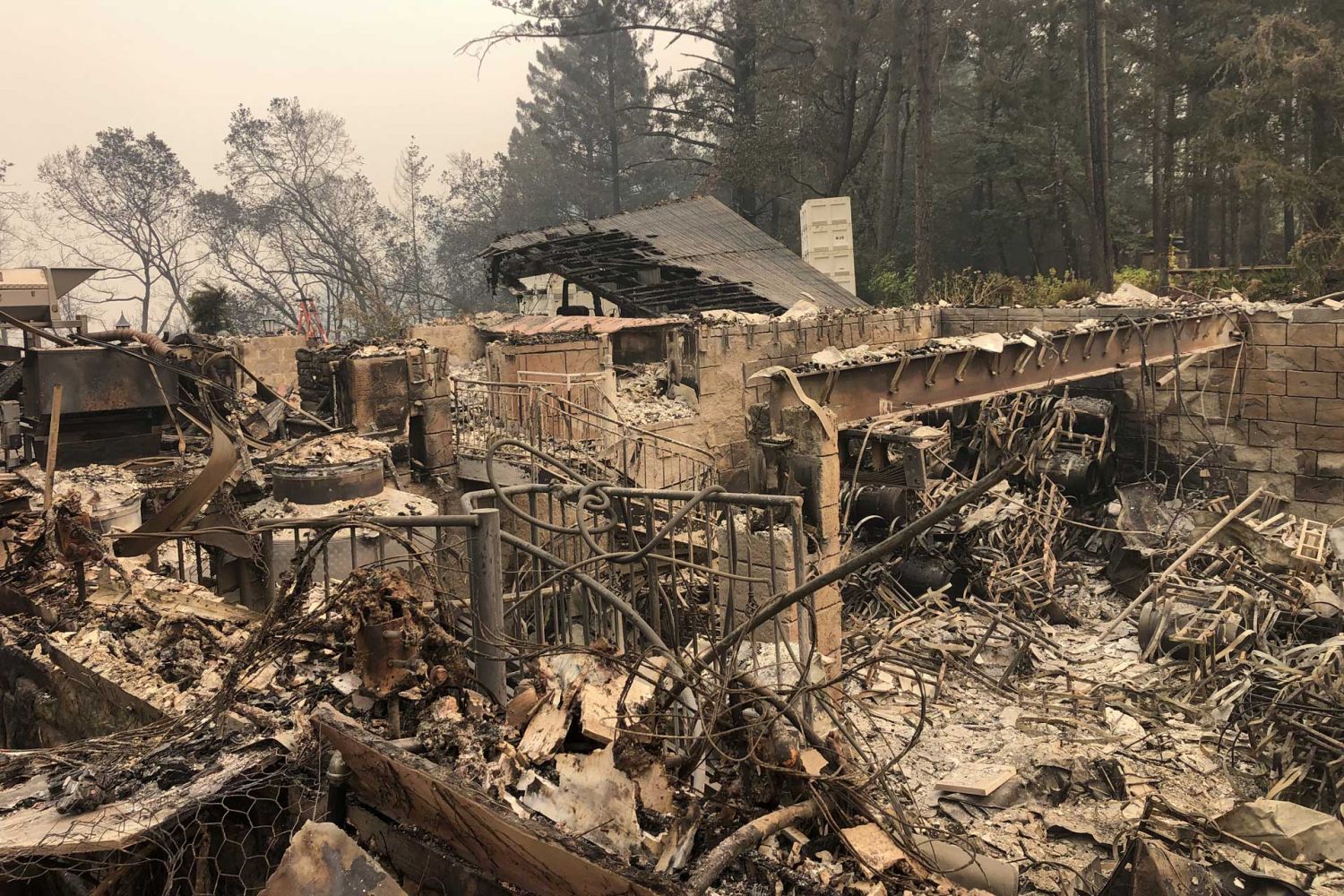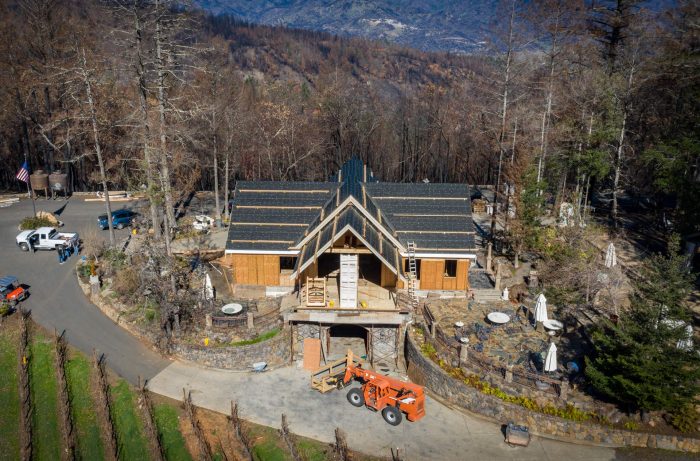Originally published in www.winemag.com, written by Stacy Briscoe
“If it wasn’t for Ron, there would be no Spring Mountain Vineyards,” says Dermot Whelon, vice president of sales and marketing for Spring Mountain Vineyard.
He refers to Vineyard Manager Ron Rosenbrand. As fire trucks drove past, and the flames of last fall’s Glass Fire threatened the estate’s perimeter, Rosenbrand stayed behind, defending his business and home.
Of the estate’s planted acreage, 96,000 vines, or 28%, burned. Sixteen buildings, including Rosenbrand’s house, collapsed. Winery and vineyard equipment was destroyed, along with cherished keepsakes.
“It could have been a lot worse,” says Rosenbrand. Bravery, a bit of luck and a personal call to a friend who is a fire chief helped to save Spring Mountain Vineyard’s winery and hospitality space.
It’s taken nearly a year for the mountain-top wineries to welcome visitors again. “Most damage to our property is out of view of what the public can see,” says Whelan. “We’re able to continue as normal now, but the view of the vineyards has definitely changed.”
And cleanup is far from over.
“All the metal debris is off site,” says Rosenbrand. “Now we’re in the process of removing ash and finer debris. It’s a slower process because you have to go through the county… There’s only a certain number of contractors that do that kind of work. They’ve been busy, given the number of structures lost.”
Ongoing safety issues presented by damaged trees are another major issue the wineries of Spring Mountain have to contend with. “There’s somewhere in the neighborhood of 1,500 to 2,000 trees that we need to remove,” says Rosenbrand. “We can’t clean it all at once, but will focus on priority areas first.”

Areas where the redwoods were badly burnt or hollowed out pose an immediate threat of falling. Even if they remain standing, they may become fuel for the next fire.
“What we have now is a forest of dead trees,” says Stu Smith, founder and general partner of Smith-Madrone Winery.
“Immediately after the fires ended, I felt potential for a new beginning, like we got the forest back to a ‘zero point.’ I was mistaken,” says Smith. “Trees I thought would live, died. About 80 to 90% of the Douglas firs are lost. Now, we have a big logging effort.”
“Lest you think we become timber barons temporarily, the reality is we’re trying to minimize the amount of money we’re going to lose on this operation.” —Stu Smith, Smith-Madrone Winery
Logging is permitted throughout the state. Individual winery owners apply to work with a Registered Professional Forester (RPF) and Licensed Timber Operator (LTO). The LTO cuts trees, hires haulers and removes wood. The RPF contracts with mills who pay estate-owners for that wood.
“Lest you think we become timber barons temporarily, the reality is we’re trying to minimize the amount of money we’re going to lose on this operation,” says Smith.
“It breaks my heart to do this. The area where the timber is coming from was a beautiful Douglas fir forest. Now it’s not,” he says. “But to protect ourselves and the mountain, we need these trees gone.”
Smith-Madrone’s winery and vines weren’t harmed in the 2020 fires so, with the immediate area cleared, Smith is now able to safely welcome guests back with some Covid precautions.
“We’re doing more in the vineyard,” says Smith. “And offering mini-viticultural classes.”
Steve Sherwin, proprietor and winemaker of Sherwin Family Winery, has a different perspective. “We’re glad most of our visitors are long-time members, so their first experience of the estate isn’t as a construction zone,” he says.
Sherwin witnessed the Glass Fire eat away at his family’s winery. “I get choked up because it burned so much of what we built over the last 25 years,” he says.
He’s been calling upon his background in construction and building development.
“I know some shortcuts in the [rebuilding] process,” he says. “We were able to get on top of the clean up pretty quick.”
By last December, Sherwin was able to secure the original building blueprints. Reconstruction began in January.
“Then I get a letter from county offices, [a] code enforcement fee—a.k.a. fine—for starting early,” says Sherwin. He notes that he did start work prior to obtaining a current building permit. The reason? “I had a permit. Just from 25 years ago.”
“It’s being treated as a new build, and it shouldn’t,” he says. “The foundation was still good, which means it’s a reconstruction.” The fine now paid, Sherwin still hasn’t been able to secure the proper county inspectors to give him approval to continue his restoration.
The winery and tasting room stand, unfinished. “The county of Napa has shown no love, even though they say they fast-track for fire victims, that’s BS,” says Sherwin.
In the meantime, Sherwin hosts guests al fresco. “It’s business ‘almost’ as usual,” he says. “When you make wine people enjoy, it’s a pat on the back and a motivator to keep going.”

